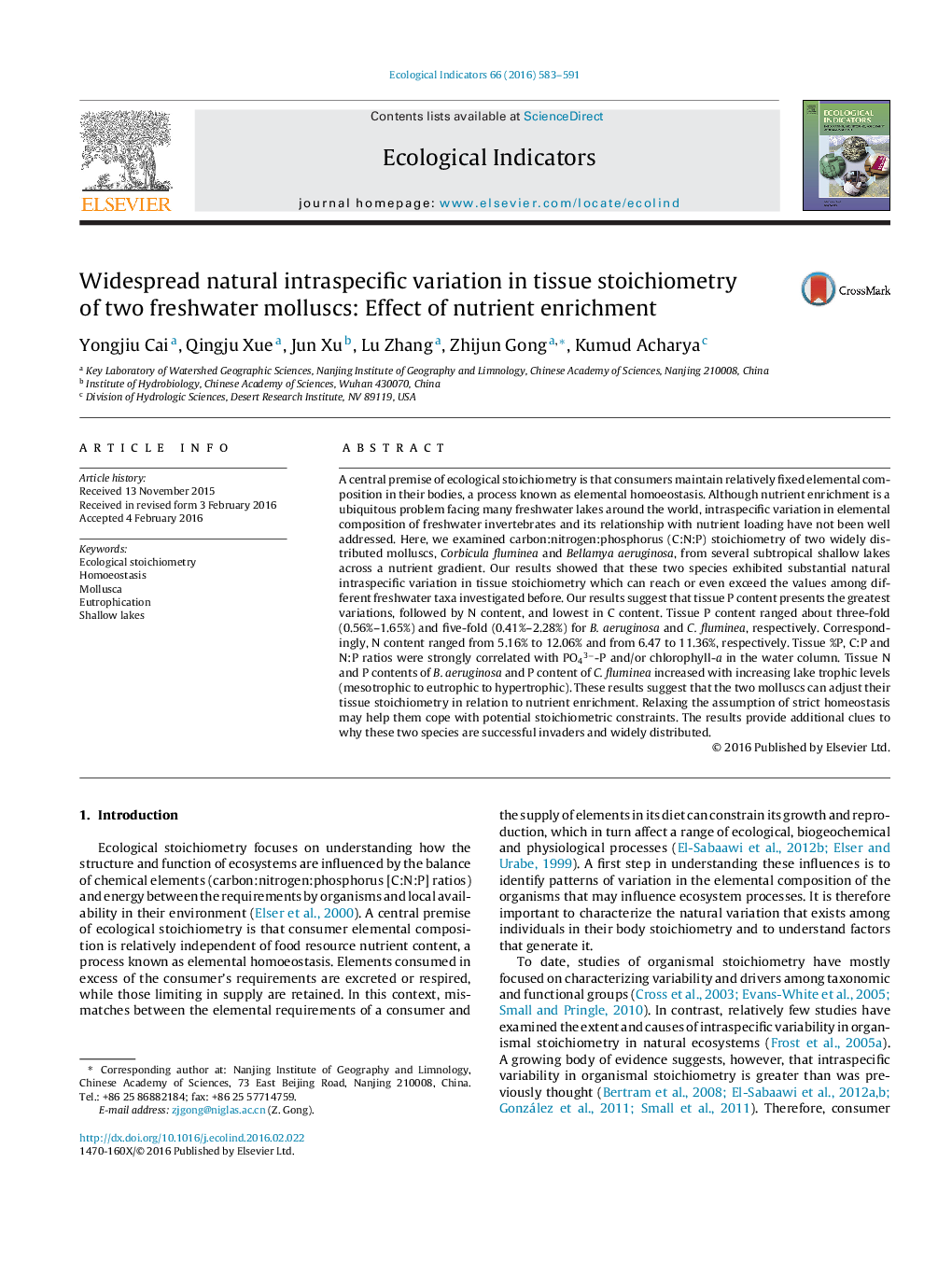| Article ID | Journal | Published Year | Pages | File Type |
|---|---|---|---|---|
| 6293548 | Ecological Indicators | 2016 | 9 Pages |
Abstract
A central premise of ecological stoichiometry is that consumers maintain relatively fixed elemental composition in their bodies, a process known as elemental homoeostasis. Although nutrient enrichment is a ubiquitous problem facing many freshwater lakes around the world, intraspecific variation in elemental composition of freshwater invertebrates and its relationship with nutrient loading have not been well addressed. Here, we examined carbon:nitrogen:phosphorus (C:N:P) stoichiometry of two widely distributed molluscs, Corbicula fluminea and Bellamya aeruginosa, from several subtropical shallow lakes across a nutrient gradient. Our results showed that these two species exhibited substantial natural intraspecific variation in tissue stoichiometry which can reach or even exceed the values among different freshwater taxa investigated before. Our results suggest that tissue P content presents the greatest variations, followed by N content, and lowest in C content. Tissue P content ranged about three-fold (0.56%-1.65%) and five-fold (0.41%-2.28%) for B. aeruginosa and C. fluminea, respectively. Correspondingly, N content ranged from 5.16% to 12.06% and from 6.47 to 11.36%, respectively. Tissue %P, C:P and N:P ratios were strongly correlated with PO43â-P and/or chlorophyll-a in the water column. Tissue N and P contents of B. aeruginosa and P content of C. fluminea increased with increasing lake trophic levels (mesotrophic to eutrophic to hypertrophic). These results suggest that the two molluscs can adjust their tissue stoichiometry in relation to nutrient enrichment. Relaxing the assumption of strict homeostasis may help them cope with potential stoichiometric constraints. The results provide additional clues to why these two species are successful invaders and widely distributed.
Related Topics
Life Sciences
Agricultural and Biological Sciences
Ecology, Evolution, Behavior and Systematics
Authors
Yongjiu Cai, Qingju Xue, Jun Xu, Lu Zhang, Zhijun Gong, Kumud Acharya,
